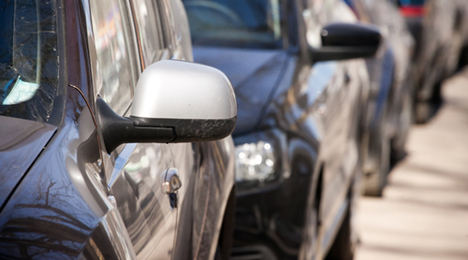Lithia eyes 1 ingredient to keep used sales moving higher

By subscribing, you agree to receive communications from Auto Remarketing and our partners in accordance with our Privacy Policy. We may share your information with select partners and sponsors who may contact you about their products and services. You may unsubscribe at any time.
MEDFORD, Ore. –
The year-over-year double-digit climb in retail used-vehicle sales during the second quarter certainly got the attention of investment analysts who watch Lithia Motors’ results regularly.
What they wanted to know was whether Lithia could sustain this growth trajectory. President and chief executive officer Bryan DeBoer pointed to one factor as a reason why Lithia might be able to surpass the 27,716 used models dealer group stores rolled over the curb in Q2 by a healthy figure again next quarter and beyond.
“The used-car supply that we spoke to last quarter is starting to loosen, which means the units in operation that were sold and put into operation three years to five years ago is increasing,” DeBoer said when Lithia hosted its conference call to share its Q2 financial statement.
“We really believe that we have a great runway, because the supply of used vehicles is growing,” he continued. “We also believe that our future and our ability to take on market changes, the cyclicality or the implications of that or volatility are reduced if you can sell used vehicles.
“With the supply of vehicles out there, it’s been easier in many of our markets to be able to continue to grow profitability and continue to grow our used and/or service and parts space,” DeBoer added.
“And like we've talked about in the past, we believe that volume is a way to secure a stronger future,” he went on to say about used retail sales gains of 10 percent or more. “We believe that those type of levels will be able to persist because the supply is continuing to increase.”
Subscribe to Auto Remarketing to stay informed and stay ahead.
By subscribing, you agree to receive communications from Auto Remarketing and our partners in accordance with our Privacy Policy. We may share your information with select partners and sponsors who may contact you about their products and services. You may unsubscribe at any time.
Lithia is facing the same headwind in the used department that many other dealerships are — stop-sales from the Takata airbag situation and other recalls. DeBoer estimated that Lithia has about 1,100 units in inventory with a stop-sale tag.
"We have pretty good pent-up demand, and those are really high-demand certified vehicles that have customers waiting for them,” DeBoer said about those units waiting for parts so they can be made retail ready.
“There could be a surge in the second half so long as we see those parts coming,” he added.
Update on M&A activity
Lithia previously discussed how it has added a trio of stores to its portfolio so far this year with the most recent transaction bringing a GMC Buick franchise in Helena, Mont., into the fold. DeBoer hinted that more acquisition announcements could be coming.
“I think if we look back six months, what we were seeing was a lot of activity, but pricing was out of the range of most buyers,” DeBoer said. “But I think the difference that's occurring now is we’ve hit this point where pricing is more closely mirroring what we’re willing to pay. And I think we're going to continue to see that for the coming quarters.
“In our opinion, we think it’s going to be an extremely busy second half,” he continued. “And I think, most importantly, when we look at acquisitions our return expectations are really high. And if we recall what those are, we expect 20 percent after-tax return on our investments.
“That combined with the idea that we buy most of our stores in rural markets where real estate costs are fairly inexpensive, we really believe that when acquisitions come to be, Lithia is pretty darn close to a greenfield type of model because of that high return expectation, buying underperforming assets in rural markets at a low real estate cost,” DeBoer went on to say.
Energy-sector recovery
Earlier this year, TransUnion explained how economic conditions in energy-dependent states helped in part to push auto finance delinquencies higher in Q1. While the downturn in energy and oil prices still are having an impact, Lithia is noticing improvement as it tries to retail vehicles in these markets.
“Texas is starting to turn a little bit. They were still down a little bit in sales, and their profits were still obviously down. But their ability to start to learn again about used vehicle sales is starting to take hold,” DeBoer said. “We’re excited to see what’s happening in other energy states as well.
“Though Alaska was down a couple percentage points, their earnings were down, too, which is more indicative of what we’d like to see. If revenues go down, then earnings go down about the same, unlike where Texas didn’t have the ability to adjust with and replace new vehicle sales with used vehicle sales. They’re starting to grasp that,” he continued.
“On a positive note, Montana was up 18 percent in revenues, and they were up 22 percent in profit, which is more indicative of what we believe should occur when new vehicle sales begin to flatten, that you can replace those quickly with the other businesses of used vehicles and service and parts,” DeBoer went on to say.


